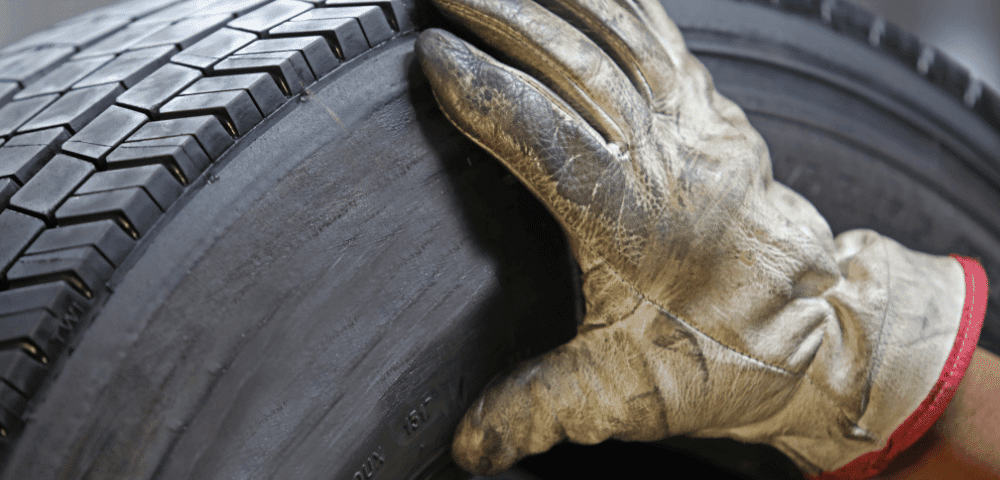When it comes to automobile tires, a few topics are as polarizing as the use of retreaded tires. Some fully support them and claim that they perform the same.
However, there are a few who think that they are not suited for the road.
So, what’s the actual case? Are retreaded tires safe or are they as risky as everyone believes? Let’s find the truth about retreaded tires.
Why Use Retreaded Tires?
Retreaded tires started off as a one-off solution, but the technology has significantly improved since then.
Today, they are used in both fleet cars and private automobiles because of their versatility and efficiency.
Here are a few reasons why retreaded tires are an excellent choice:
Higher efficiency: Thanks to the advances in retreading technology, tires now can quickly be retreaded multiple times without any issues.
Naturally, retreading is a simpler process than creating a tire from scratch and a production environment can retread multiple tires in the same duration it takes to produce one.
Lower environmental impact: The most dominant material in tires is rubber and the more it’s discarded, the worse it’ll be for the environment.
Despite the best efforts to recycle old tires, it’s a fact that a significant portion still ends up in landfills.
Retreading tires can solve this issue as they have a lower carbon footprint and naturally reduce the overall load on any nation’s recycling program.
Better savings: Buying new tires is a significant expense. Now imagine the same expense if you have 2,4, or even more cars.
You are looking at a significant expense and that is precisely why most fleets consider tires to be their primary expense after fuel.
Opting for a retreaded tire instead of completely replacing it naturally saves a lot of money.
Greater versatility: Compared to the other options, retreaded tires are more versatile as they are generally a fit for any terrain or season.
Moreover, retreaded tires often add up to 800,000 (km) kilometers (about 497,000 miles) in any tire’s operational lifespan.
The Safety Risks Associated with Retreaded Tires
It is often said that retreaded tires are primarily responsible for the gators and tire scraps we see on the road. Actually, It can be any tire. Retreading technology has come a long way from what it was in the past.
Today, retreaded tires perform the same as any new option and have no additional safety risks involved.
The tire’s performance and durability come down to how it was maintained and used. Issues like misalignment, overheating, and road hazards can be avoided if the tires are properly maintained and checked periodically.
Are Retreaded Tires Legal?
The short answer is yes! There are no federal or state laws that completely ban or restrict the use of retreaded tires.
Contrarily, the Department of Energy even requires the exclusive use of retreaded tires in government vehicles.
This doesn’t mean that there are no rules at all in regard to retreaded tires. State-wise, there are a few regulations, but they apply to all tires.
For instance, Connecticut has very specific guidelines about tire features, and they are applicable to both retreaded and normal tires.
Fortunately, almost all retreaded tires fulfill those legal requirements and are currently used on the road.
How Long do Retreaded Tires Last?
When it comes to durability, there is frankly no difference between retreaded or other tires.
So, they last as long as any other tire you see in the market.
The actual life depends on the manufacturers and the overall use as there are numerous external factors that determine the operational life of any tire.
Factors Affecting Tire Safety for Vehicles
It is an undeniable fact that driver behavior plays an integral role in determining the road safety of any tire.
Retreaded tires or not, routine checks and extensive monitoring can keep everyone on the road safe from any preventable accidents.
Here are a few tips every driver should follow to ensure that they get the best performance from their tires.
- Always inspect the tires before leaving for any trip.
- Keep a close eye on tire pressures and ensure that they are properly inflated.
- Inspect your tires and sidewalls after driving through rough terrain or any debris.
- Never drive with a defective tire and replace it as soon as possible.
- Periodically maintain your tires by properly rotating, balancing, and aligning them.
- Ensure that the tread design is in accordance with the prevailing weather conditions.
This small and simple, yet incredibly effective checklist may not seem too intricate.
However, it can make all the difference in the performance and overall costs of a fleet.
Even for individual drivers, the tires are a significant expense, and having retreaded tires can make the change a bit more economical for them.
The Truth About Retreaded Tires
Despite the prevailing belief that retreaded tires are weaker or don’t perform the same, they continue to make a difference in the overall performance and cost-effectiveness of active fleets.
Even retreaded tires go through a large variety of safety checks, which mitigates all the associated risks.
Furthermore, retreaded tires are not banned or restricted even in the strictest states.
They are in fact recommended by the federal government, which shows how far along the technology has come.
So retreaded tires are not a problem at all and if you have the opportunity, it’s smarter, economically viable, and the most efficient method of creating tires.



